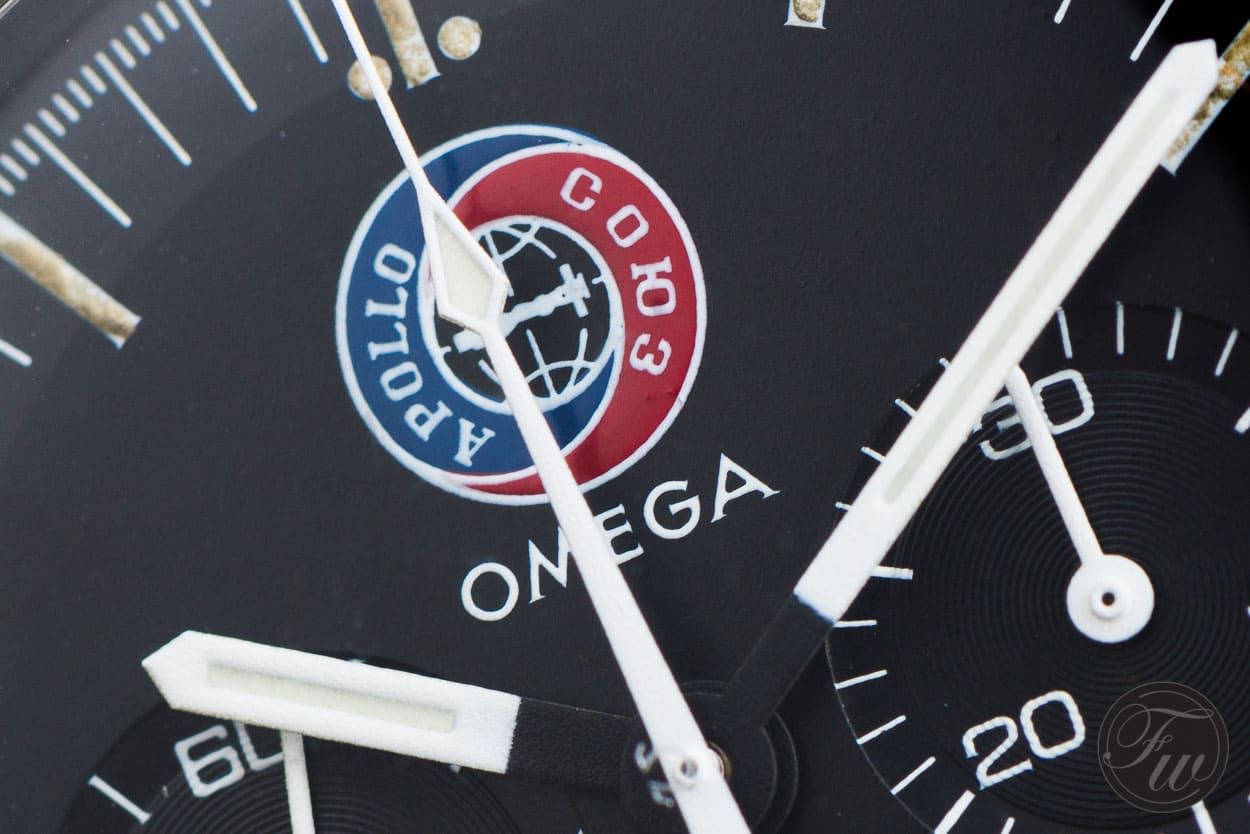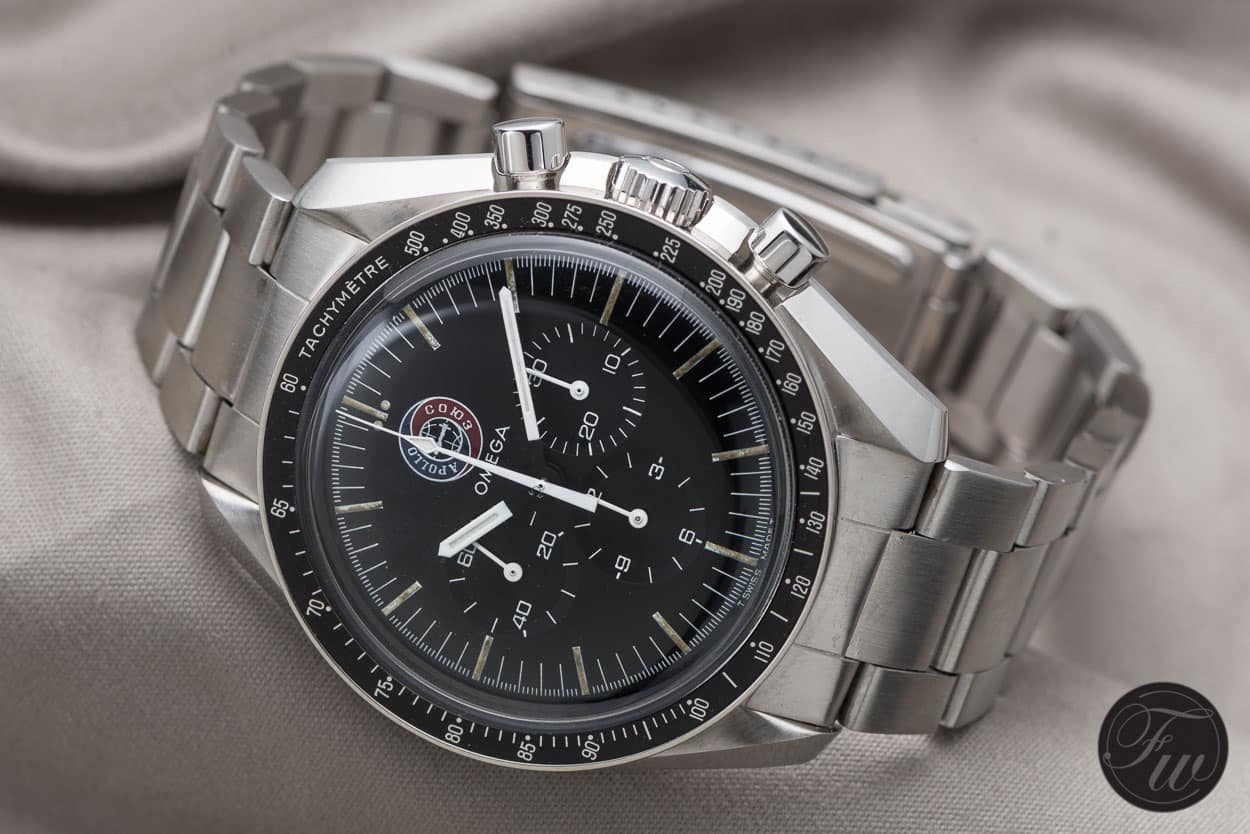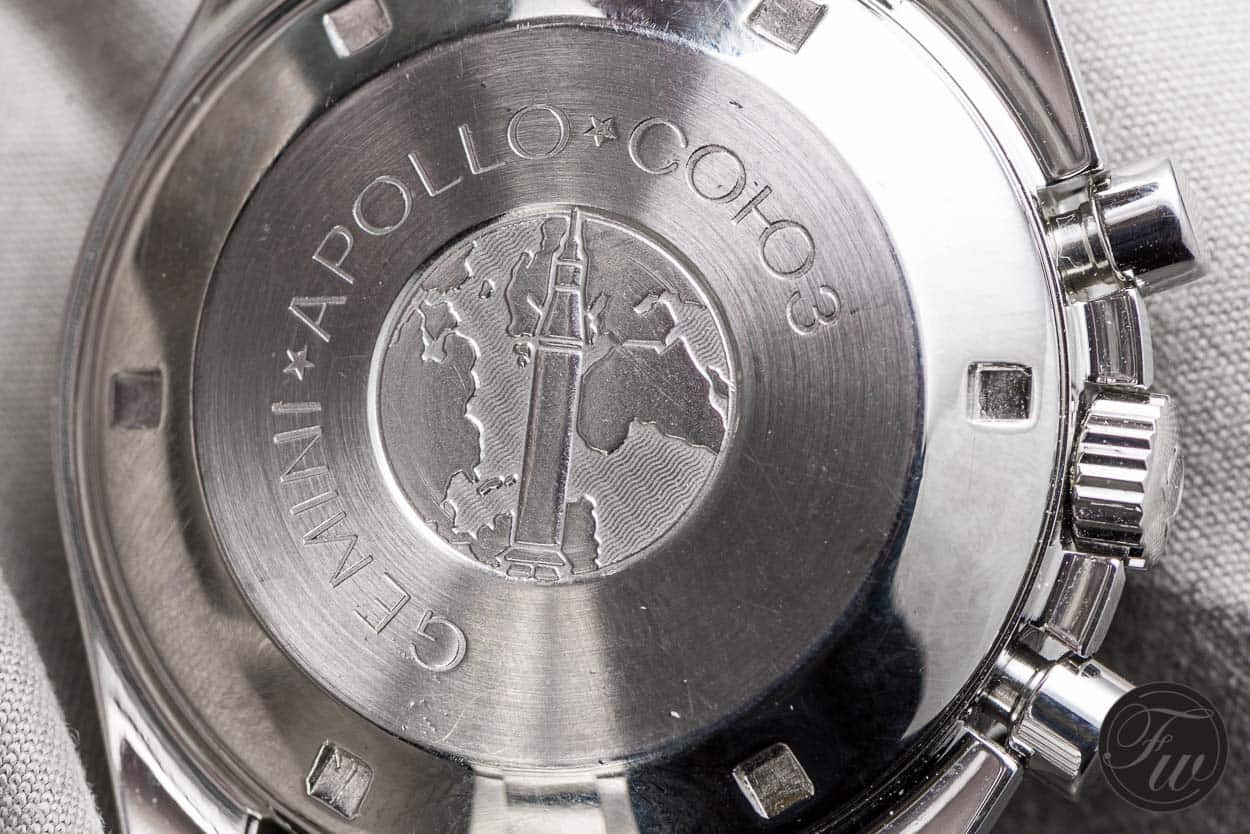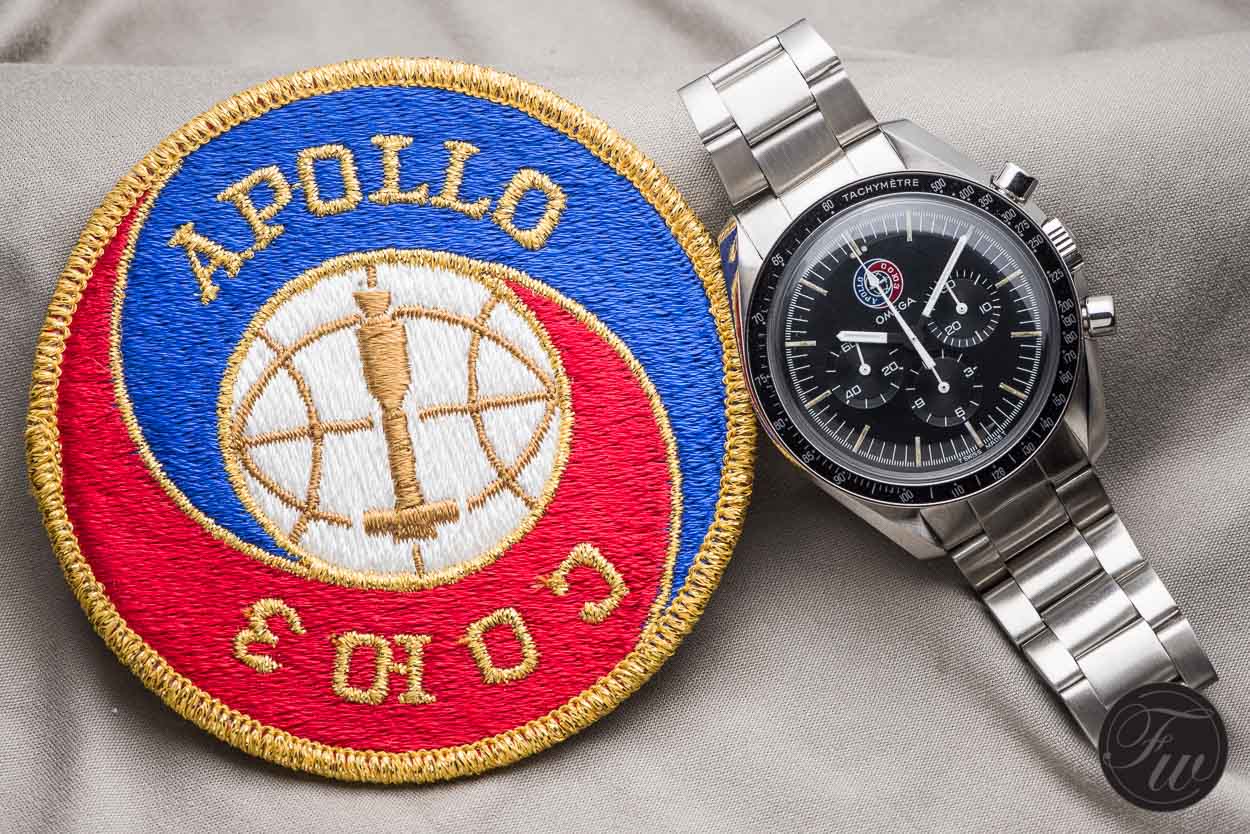Speedy Tuesday – Omega Speedmaster Apollo-Soyuz
It was in 1975 when the two super powers forgot about the Cold War for just a moment by docking the Apollo and Soyuz spacecrafts at an altitude of 138 miles. Launched at the 15th of July in 1975, the docking took place on the 17th of July and lasted for 44 hours. After the docking, the American crew transferred from the Apollo to the Soyuz spacecraft.
Earlier this year I’ve met with the commander Apollo CSM-111 spacecraft, Thomas P. Stafford. Together with astronauts Vance D. Brand and Donald K. Slayton (one of the original 7 astronauts NASA selected for their space program) he flew from the 15th of July till the 24th of July 1975. At the same time this year, I met with Alexey Leonov, command of the Soyuz 7K-TM spacecraft. Together with cosmonaut Valeri Kubasov he flew from the 15th of July till the 21st of July.
Both gents have been long time friends. Although Thomas P. Stafford and Alexey Leonov were wearing gold Omega watches at the time I met them, Stafford told me he was proud to own a Omega Speedmaster Apollo-Soyuz watch. He was referring to the model with the meteorite dial, that we’ve featured here before (click here for the Omega Speedmaster Apollo-Soyoz meteorite dial article).
What didn’t become clear, is whether he or Leonov also has the 1975 limited edition Omega Speedmaster Apollo-Soyuz with the mission patch at 12 o’clock and the Saturn 1B rocket against a map in bas-relief on the case back. It would be great to have that information for this week’s article, which is about the Omega Speedmaster Apollo-Soyuz from 1975.
Omega Speedmaster Apollo-Soyuz
This Omega Speedmaster Apollo-Soyuz watch was the first watch to commemorate the 1975 Apollo-Soyuz mission. As you can see on the photo’s above, the dial has the mission patch printed at 12 o’clock. The watch also came with a slightly different bracelet than we are used to, the reference 1168 with 633 end-pieces (same end-pieces as the famous and well-known 1171).
The long hour markers (going all the way to the outside of the dial, over the minute markers) is similar to the ones on dials used to up 1969 with the applied Omega logo. Due to the Apollo-Soyuz mission patch, there is no Speedmaster Professional written on the dial.
 As you can see, the hands on the Omega Speedmaster Apollo-Soyuz we photographed are a bit different to the regular Speedmaster Professional hands. Even though the watch we show you here is property of the Omega Museum in Bienne, we are unsure whether this type of hands were originally used for this model. Most Omega Speedmaster Apollo-Soyuz models we’ve come across seem to have the normal set of white baton hands.
As you can see, the hands on the Omega Speedmaster Apollo-Soyuz we photographed are a bit different to the regular Speedmaster Professional hands. Even though the watch we show you here is property of the Omega Museum in Bienne, we are unsure whether this type of hands were originally used for this model. Most Omega Speedmaster Apollo-Soyuz models we’ve come across seem to have the normal set of white baton hands.
Inside this watch is the famous Lemania based caliber 861 with copper finish. It is difficult to say whether the watches the astronauts and cosmonauts actually used during the mission has the same movement. Since the Speedmaster Professional 105.012 and 145.012 (with caliber 321) were the ones commissioned and the caliber 861 Speedmaster Professional 145.022 wasn’t certified until 1978 (for the shuttle program) my best guess would be that at least the astronauts had the caliber 321 models on their wrists. Although Alexey Leonov has been photographed with an Omega Flightmaster on his wrist during an earlier mission, he and Valeri Kubasov were also wearing Speedy Pros.

 The caseback of the Omega Speedmaster Apollo-Soyuz has the Saturn 1B rocket in bas-relief as well as the words Gemini – Apollo and ???? (Soyuz). Our favourite book on the subject, Moonwatch Only (read our Moonwatch Only book review here), tells us that the case backs had a very light engraving (Italian) as well as the number of the watch. However, the book also describes that it was done so finely that it would definitely disappear after a couple of years or wearing.
The caseback of the Omega Speedmaster Apollo-Soyuz has the Saturn 1B rocket in bas-relief as well as the words Gemini – Apollo and ???? (Soyuz). Our favourite book on the subject, Moonwatch Only (read our Moonwatch Only book review here), tells us that the case backs had a very light engraving (Italian) as well as the number of the watch. However, the book also describes that it was done so finely that it would definitely disappear after a couple of years or wearing.
According to our knowledge, only 500 pieces were ever produced of this Omega Speedmaster Apollo-Soyuz (ST145.0022) model. The authors of Moonwatch Only were able to find delivery invoices of only 400 pieces to the Italian distributor De Marchi at that time (1976). There is no information on the remaining 100 pieces. Another interesting remark they made is that the case of this watch is slightly different from the regular “Moonwatch” Speedmaster Pro 145.022 models. The pushers are 5.5mm in diameter instead of the regular 5mm. On pictures of this watch in Moonwatch Only you will see that the case band of the Omega Speedmaster Apollo-Soyuz is slightly modified to make them fit. Also, the polished part of the crown guards seem to be larger than on the regular reference 145.022 models. All just slight differences that makes this Omega Speedmaster Apollo-Soyuz a very interesting watch.
It is very difficult to value this Omega Speedmaster Apollo-Soyuz. In 2007, the famous Antiquorum OmegaMania auction had this Apollo-Soyuz that was hammered for CHF26K Swiss Francs. I’ve personally seen one for sale in the early 2000s for around 10.000 Dutch Guilders at that time. An ultra rare watch that collectors are probably keeping on to for the future.
Did you know that Omega – besides this Speedmaster Apollo-Soyuz 1975 model and the 35th Apollo-Soyuz model with meteorite dial – also produced two other Speedmaster Apollo-Soyuz watches? The 20th and 25th anniversary editions of the Apollo-Soyuz mission were introduced in resp. 1995 and 2000. Both watches are in yellow gold and have a black dial. The 1995 model is limited to 200 piece and the 2000 model is limited to just 50 pieces.
If you have more information regarding the Omega Speedmaster Apollo-Soyuz models, please give us a shout. See the gallery below for a few more photos we took of the Speedmaster Apollo-Soyuz.








